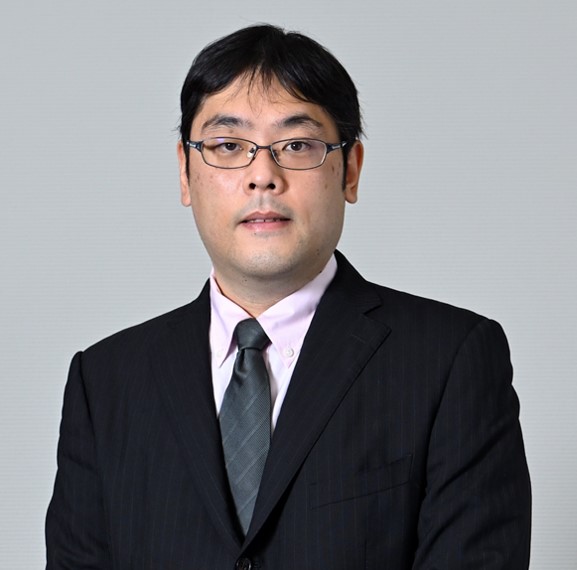Research News:Reclaiming Carbon Fibers from Discarded Composite Materials
November 16, 2023
Researchers demonstrate how thermal decomposition in superheated steam helps preserve the mechanical properties of reclaimed carbon fibers
The demand for carbon-fiber-reinforced plastics (CFRPs) for aerospace, automotive, and renewable energy applications has recently skyrocketed, creating the need for efficient ways to recycle these composites. Now, scientists from Doshisha University have investigated how using superheated steam can help preserve the properties of fibers recovered from waste CFRP via thermal decomposition. Their findings could open doors to more sustainable manufacturing processes and a reduced environmental impact in industries reliant on CFRPs, contributing to a greener future.
Minimizing energy consumption is a fundamental element in our journey towards sustainable societies, and advanced materials play a key role in this regard. Carbon-fiber-reinforced plastics (CFRPs) and carbon-fiber-reinforced thermoplastics (CFRTPs) are two prominent examples of composite materials that can significantly improve energy efficiency in various fields of application.
These composites are made of carbon fibers embedded in a polymer matrix, such as epoxy resin. Thanks to their low weight and remarkable mechanical strength, CFRPs and CFRTPs can greatly reduce the fuel consumption of aircraft, spacecraft, and automobiles. Moreover, they are durable and corrosion-resistant, making them suitable for renewable energy applications like wind turbines.
In recent years, the demand for CFRPs and CFRTPs has grown explosively. However, this also means that the amount of CFRP/CFRTP waste is also increasing rapidly. Since producing carbon fibers is very energy intensive, researchers have been looking for economically feasible ways to recover them from CFRP/CFRTP waste through a process known as “reclamation.” Thus far, the thermal decomposition (pyrolysis) technique seems to be the most effective, but preserving the mechanical properties of the reclaimed fibers has proven challenging.
Against this backdrop, researchers from Doshisha University, Japan, sought to investigate the benefits of conducting the pyrolysis of CFRPs/CFRTPs in a superheated steam (SHS) atmosphere as opposed to the standard atmosphere. In a recent paper published in Composites Part A: Applied Science and Manufacturing, Associate Professor Kiyotaka Obunai and Professor Kazuya Okubo revealed their findings to shed light on this innovative approach. The study was made available online on October 17, 2023, and will be published in Volume 176 of the journal on January 01, 2024.
The rationale behind conducting pyrolysis in an SHS atmosphere is relatively straightforward. Dr. Obunai explains: “SHS not only prevents the oxidation of carbon fibers by creating a low-oxygen environment but also removes polymer residues from the surface of the reclaimed fibers.” The researchers not only tested the mechanical characteristics of the reclaimed carbon fibers but also evaluated the performance of actual CFRP composites made using these fibers. To this end, they conducted bending strength tests and Izod impact strength tests, which assess the ability of materials to withstand applied loads by bending and assessing their resistance towards sudden blows, respectively.
The results of their experiments revealed several attractive aspects of pyrolysis reclamation in SHS. First, using advanced microscopy techniques, the researchers found that the SHS atmosphere suppressed the formation of dimple-like defects called “pitting” in the recovered fibers, realizing a smooth surface. Moreover, when pyrolysis was conducted at high temperatures (≥ 873 K), fibers reclaimed in an air atmosphere exhibited greatly reduced tensile strength and fracture toughness compared to those of “virgin” fibers. In contrast, these mechanical properties remained relatively the same in fibers reclaimed in an SHS atmosphere, highlighting the advantage of the SHS atmosphere in preserving both the fracture toughness and tensile strength of reclaimed fibers.
On top of this, fibers reclaimed in an SHS atmosphere also exhibited less variation in their mechanical properties, making their performance more consistent and more suitable for practical applications. Additionally, the SHS atmosphere during pyrolysis mitigated the degradation in the bending strength and Izod impact strength, making them similar to composites made with virgin fibers.
Taken together, these findings highlight the potential of pyrolysis reclamation in an SHS atmosphere to recover carbon fibers from composites. By providing an effective way to recycle, this approach might be the key to successfully introducing CFRPs/CFRTPs into a circular economy. “This work potentially provides an effective method for the reclamation of waste CFRP and contributes to the feasibility of achieving Sustainable Development Goals,” concludes Dr. Obunai, “The effectiveness of adopting a SHS atmosphere instead of inert gases for the mass-scale pyrolysis reclamation of waste CFRP should be investigated in future work.”
Further research will hopefully cement the position of CFRPs/CFRTPs as energy-efficient and sustainable materials for various applications, leading to a greener future.

Carbon-fiber-reinforced plastics (CFRPs) as energy-efficient structural materials.
Thanks to their light weight yet remarkable strength, the use of CFRPs in the automobile, aerospace, and renewable energy industries is soaring. However, this means finding effective ways to recycle the waste generated by CFRPs is essential to ensure sustainability in the long term.
Image courtesy: LunchboxLarry at Openverse
Image license: CC BY 2.0
Image link : https://openverse.org/image/094d7259-9a00-48a2-b9ac-dcc92e63a8a9
Reference
| Title of original paper | Mechanical characteristics of reclaimed carbon fibre under superheated steam atmosphere and its feasibility for remanufacturing CFRP/CFRTP |
| Journal | Composites Part A: Applied Science and Manufacturing |
| DOI | 10.1016/j.compositesa.2023.107843 |
Funding information
This study was financially supported by a research project under the ‘‘Research and Development Center for Advanced Composite Materials’’ of Doshisha University and MEXT (the Ministry of Education, Culture, Sports, Science and Technology, Japan)-Supported Program for the Strategic Research Foundation at Private Universities, 2013–2017 (Project S1311036).
Profile

Dr. Kiyotaka Obunai joined the Department of Mechanical and Systems Engineering of the Faculty of Science and Engineering at Doshisha University as Associate Professor in 2018. His main research interests lie in manufacturing technology, including mechanical, electrical/electronic, and chemical engineering, as well as materials research and mechanics. He has published over 75 papers on these topics and received several awards, including the JSMS Award for Promising Researchers and the JSMS Kansai Branch President Award in 2022.
Kiyotaka Obunai
Associate Professor, Faculty of Science and Engineering Department of Mechanical and Systems Engineering
Media contact
Organization for Research Initiatives & Development
Doshisha University
Kyotanabe, Kyoto 610-0394, JAPAN
CONTACT US
